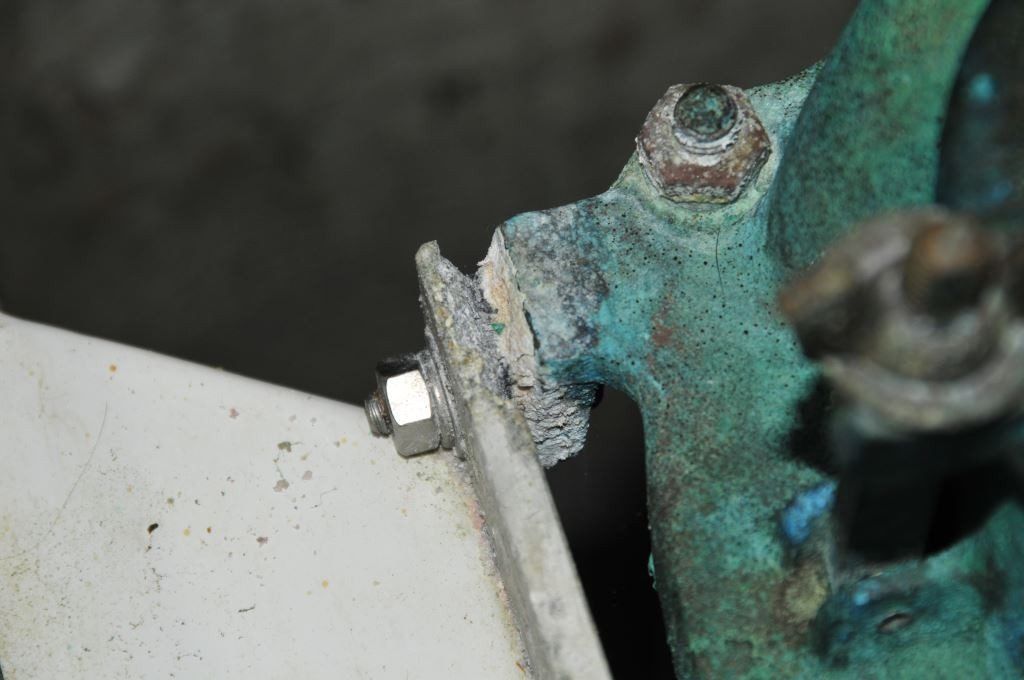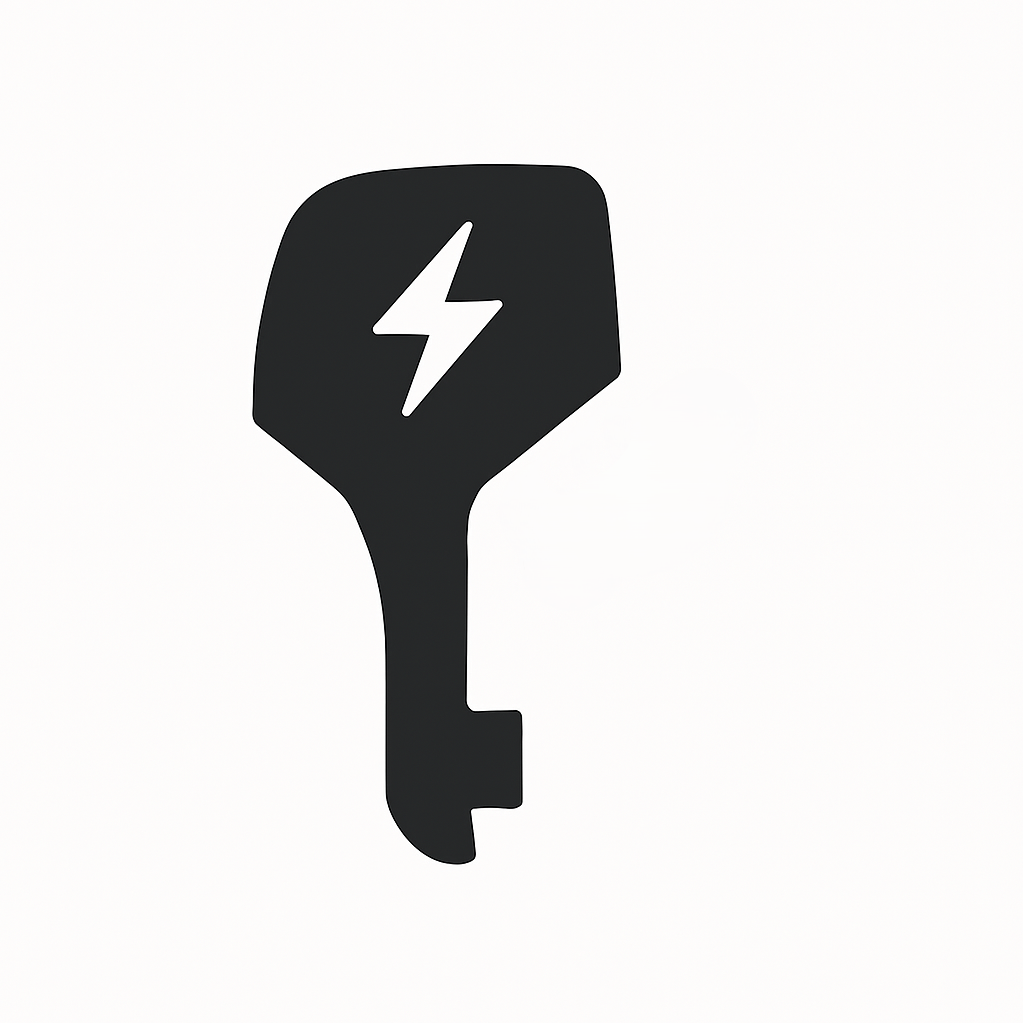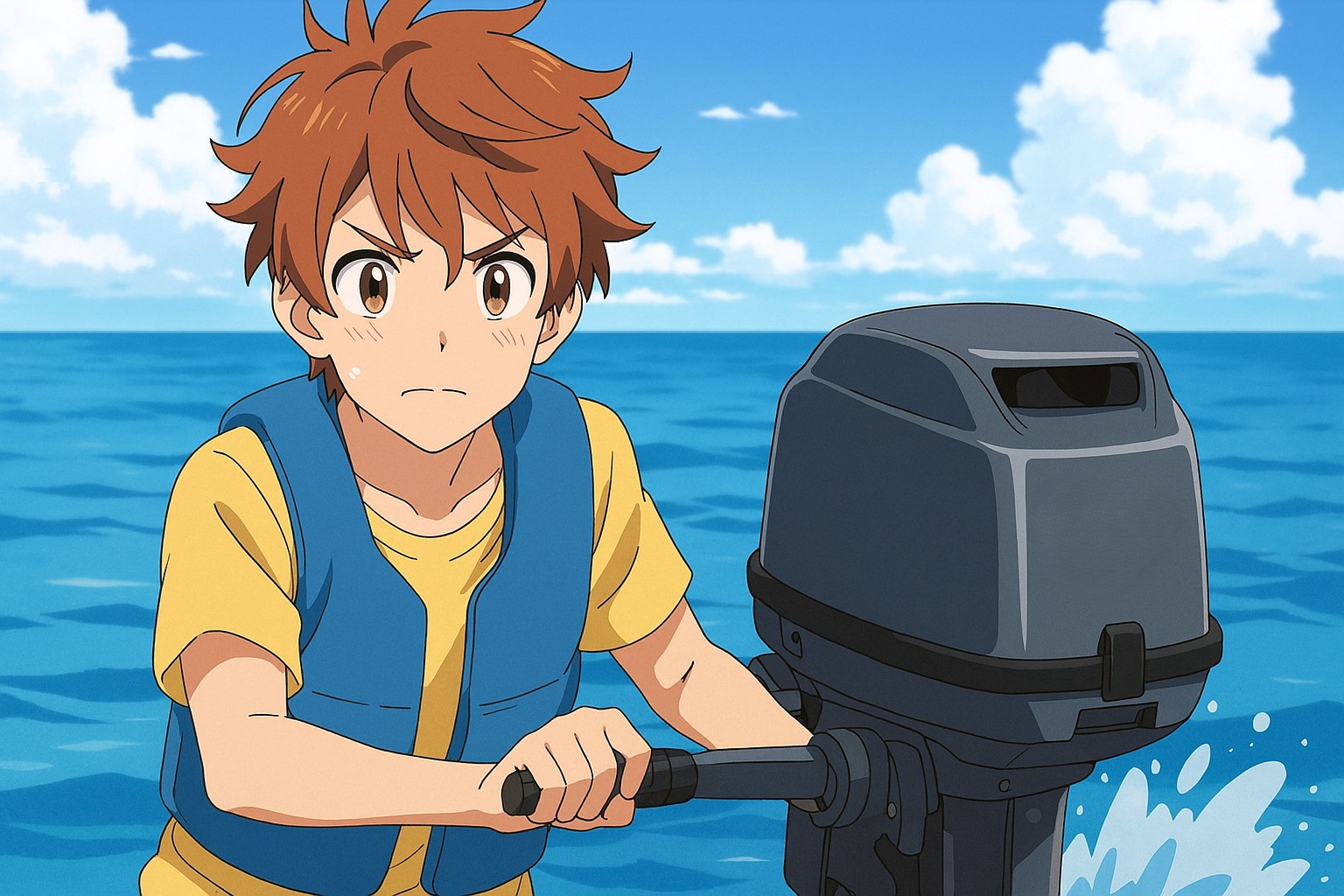Are you ready to maximise the performance and longevity of your 150hp outboard? The environment in which you operate plays a crucial role in your engine’s reliability and operating costs. This guide explores the unique challenges posed by freshwater and saltwater, the impact on both fuel and electric drivetrains, and essential maintenance tips to ensure your outboard stays in top shape.
Why the environment matters for a 150-horsepower outboard
Water chemistry is like the weather for your metal parts, seals, and electrical systems—they all react differently depending on the conditions around them. Saltwater is packed with sodium chloride and other substances that can be tough on your equipment. This salty water acts like a conductor at a rock concert, amplifying electrical conductivity and making everything more reactive.
On the other hand, freshwater is like a calm lake, usually gentler but still capable of causing trouble. It has lower levels of salts, but sometimes it brings along minerals, tannins, or even pesky little organisms that can mess with your boat’s performance.
If you own or operate a 150hp outboard motor, it’s crucial to tailor your maintenance routine to match the “weather” of your environment. Just like you wouldn’t wear a winter coat in the summer heat, your inspection schedule, anode replacements, and protective treatments need to reflect whether you’re navigating through saltwater storms or freshwater lagoons. Taking care of your motor according to its surroundings will ensure it runs smoothly and reliably.
Typical use cases for a 150hp outboard motor in freshwater and Saltwater
A 150 horsepower outboard is a versatile class: it suits planing family tenders, day-cruisers, fishing craft and tow sports boats. In freshwater lakes and rivers you will often use the engine for prolonged low- to mid-throttle cruising and trolling; inshore saltwater use typically includes transit through tidal currents, short bursts for planing and more frequent annealing effects from warmer water near shallow coastal areas.
Performance Expectations: Freshwater vs Saltwater
Expect similar peak output from the engine, but note that corrosion, fouling and cooling efficiency losses in saltwater can reduce sustained performance by raising operating temperatures or wearing propeller surfaces. An electric drive such as a 150hp electric outboard motor may show reduced efficiency if salt deposits form on connectors or if thermal management of batteries is compromised by a saline environment.
Freshwater vs Saltwater: How They Affect a 150HP Outboard
Salt content and its effect on metal components
Salt acts as an electrolyte, which means it can increase the rate of corrosion and interactions between different metals. Metal alloys that are safe to use in freshwater can corrode quickly when they are in seawater, especially if different types of metals are connected together. Common parts that experience this corrosion include the lower unit casing, propeller shafts, trim hardware, and outer fasteners.
In electrical systems, salt spray and moisture from salt can harm connections and printed circuit boards if they are not adequately sealed and maintained.
Cooling system stress in saltwater vs freshwater
Cooling water can carry particles, tiny living organisms, and salts. These can build up and damage the insides of your engine. In saltwater, crystals from the salt and biological films can quickly block small openings like orifices, thermostats, and heat exchangers. When cooling passages are partially blocked, your engine runs hotter, which can cause faster wear and reduce the lifespan of its components. Therefore, if you often operate in salty conditions, it’s crucial to have regular flushing routines and to use inline strainers to keep everything running smoothly.
Fuel vs battery efficiency changes in different water environments
Combustion engines can face issues with their fuel systems due to corrosion on fittings and microbial growth in fuel tanks, especially when there’s water contamination. While salt doesn’t directly affect the fuel, it can damage metal fuel lines and injectors.
On the other hand, for a 150hp electric outboard motor, how well the batteries perform largely depends on managing their temperature. Salt can cause corrosion on battery terminals and ventilation pathways, which increases internal resistance and reduces the energy they can use. So, it’s crucial to protect battery cables and enclosures to ensure optimal performance.
Types of Corrosion in a 150HP Outboard
Electrochemical corrosion
Electrochemical corrosion occurs when metals with different electrochemical potentials come into electrical contact within an electrolyte such as seawater. The less noble metal becomes the anode and corrodes, while the more noble metal remains protected. On outboards, this process is most commonly seen on propeller shafts, trim tabs, and lower units where stainless steel fasteners meet aluminium casings.
Chemical corrosion
Chemical corrosion refers to direct chemical attack by compounds in the water. It involves a direct chemical reaction between the metal surface and the surrounding environment. In saltwater, chloride ions attack metal surfaces, especially stainless steel, damaging the thin oxide film that normally protects it. Over time, this leads to pitting corrosion, weakening components like fasteners, housings, and impellers.

Corrosion Risks in Saltwater for 150HP Outboards
Galvanic reactions affecting lower units, prop shafts, and hardware
A lower unit aluminium casing mated to a stainless steel shaft and a bronze propeller creates a galvanic cell in seawater. Unless you have properly sized sacrificial anodes and electrical isolation, the aluminium (being less noble) corrodes rapidly. You should treat these interfaces as high-risk zones and inspect them every 25–50 engine hours when operating in saltwater.
Chemical salt build-up in internal cooling passages
Salt crystallisation and organic fouling narrow passages and increase pump wear. Even short periods of idling in shallow, warm saltwater can create conditions that promote build-up. That is why a structured flushing and inspection routine is critical to maintaining heat exchange efficiency.
Protection challenges for a 150hp electric outboard’s circuits and battery components
Electric drivetrains introduce unique vulnerabilities: battery management systems (BMS), power electronics and connectors are sensitive to both ionic contamination and moisture ingress. Salt can carry current across insulating surfaces and create leakage paths; it also encourages the formation of conductive films on PCBs. For a 150hp electric outboard motor, IP-rated enclosures (IP67 or higher for immersed components), conformal coating of electronics and double-sealed cable glands substantially reduce risk.
| Corrosion Type | Typical Location | Symptoms | Recommended Action |
|---|---|---|---|
| Galvanic (electrochemical) | Prop shafts, trim tabs, lower units | White or green deposits, pitting, metal loss | Replace anodes, isolate dissimilar metals |
| Chemical (chloride-induced) | Fasteners, impellers, exposed surfaces | Pitting, coating blistering, leaks | Recoat surfaces, use corrosion inhibitors |
How to Prevent Corrosion in 150 HP outboards
Prevention is a combination of material choice, sacrificial protection, physical barriers and disciplined maintenance. The steps below are practical and prioritised by cost-effectiveness and impact.
Use of sacrificial anodes
Sacrificial anodes (zinc, aluminium or magnesium, chosen by water type) are the frontline defence. They must be properly sized and electrically bonded to the metallic systems they are protecting. Replace anodes when they have lost 50% or more of their original mass—or at the interval specified by your manufacturer.
Avoiding contact between dissimilar metals
Use dielectric couplings, polymer washers and isolation sleeves at join points to prevent direct metal-to-metal contact. If you fit stainless steel bolts into aluminium housings, ensure insulating bushings are present.
Proper grounding for 150hp electric outboards
For electric systems, establish a deliberate grounding and bonding scheme. A single-point ground prevents stray currents; equip the vessel with a main bonding bus and bond sacrificial anodes to it. Ensure the BMS and motor controller have appropriate earth-fault protection and monitoring.
Anti-corrosion coatings and marine-grade materials
Use proven marine coatings on exposed metals and choose fasteners rated to marine standards (e.g. marine-grade 316 stainless where appropriate). For areas where galvanic risk is high, consider epoxy barrier coatings plus paint systems tested for marine abrasion.
Rinsing salt deposits and washing engine surfaces regularly
After each saltwater outing, thoroughly rinse the exterior of the engine and flush the cooling system. For an electric outboard, ensure all battery and power connections are dry and free from salt residue; spray light protective lubricants (see below) on external terminals after drying.
Using salt-neutralizing sprays and protective lubricants
Salt-neutralising sprays can help remove residual chloride ions and slow active corrosion between major washes. Use marine-grade dielectric grease on electrical connectors and corrosion-inhibitor sprays on exposed metal as part of a weekly or post-trip routine.
Anti-Corrosion Maintenance Tips
Flushing routines after saltwater use
Flushing is the single most effective routine for preventing salt-related damage. For fuel outboards, connect a flushing kit to the water intake and run the engine at idle for 5–10 minutes until exhaust is clear. For a 150hp electric outboard, follow the maker’s guidance—often this includes lifting the unit out of water and using a freshwater spray to clean external passages while cycling the cooling pump if fitted.
Inspecting anodes, propeller shafts, and engine casing regularly
Visually inspect anodes for erosion, prop shafts for pitting and casings for blistering paint or exposed metal. Note and log hour counts and replace parts according to measured wear—not just calendar time. Keep a simple maintenance log that records hours, water type used and major interventions.
Battery and cable protection for a 150hp electric outboard motor
For electric systems, focus on:
- IP-rated enclosures for batteries and controllers.
- Corrosion-inhibitor on terminals after cleaning.
- Mechanical protection for cables where chafing or salt spray exposure is likely.
- Regular terminal torque checks and visual inspection for green/white salt deposits.
| Item | Action | Interval |
|---|---|---|
| Battery terminals | Clean, dry, apply dielectric grease | Monthly / after heavy salt exposure |
| Cable glands | Inspect seals, re-seat or replace if degraded | Bi-annual |
| Controller enclosure | Check for condensation and ingress | Quarterly |
Conclusion
Maintaining your 150hp outboard is key to ensuring its longevity and performance. By following a structured maintenance routine, you can protect your investment and enjoy worry-free adventures on the water. Compared with fuel outboards, electric outboards need less maintenance.
Frequently Asked Questions
1. How often should I replace sacrificial anodes on a 150hp outboard used in saltwater?
Replace anodes once they have lost roughly 50% of their original mass or sooner if you notice rapid deterioration. For moderate saltwater use, this commonly equates to every 25–100 engine hours or annually—whichever comes first. Log the condition at every inspection to detect accelerated rates of depletion.
2. Can I run a 150hp electric outboard in saltwater without special modifications?
You can operate an electric unit in saltwater, but you must ensure all exposed electrical components meet appropriate ingress protection (IP) ratings and that terminals are protected with dielectric grease or sealed boots. Additionally, battery enclosures and motor controllers should be conformally coated or housed in an IP67+ enclosure to prevent salt-driven leakage and corrosion.
3. What immediate steps should I take after an accidental immersion of electrical components?
Power down at once, isolate batteries, rinse with fresh water if contaminated by salt (only after disconnecting power), then dry thoroughly and inspect for corrosion. Do not re-energise until terminals and connectors have been cleaned and a qualified technician has inspected the BMS and controllers where applicable.
4. How do I choose between zinc, aluminium and magnesium anodes for a 150hp outboard?
Choice depends on water type: zinc is commonly used in saltwater, aluminium suits a range of brackish to saltwater conditions and magnesium is typically reserved for freshwater where higher electrochemical activity is needed. Follow manufacturer guidance for your specific outboard and local water conditions; incorrect anode material can be ineffective and increase risk.
5. Are anti-corrosion sprays safe for my 150hp outboard’s electrical connectors?
Use products specifically designed for marine electrical protection. Apply dielectric grease to connectors and use corrosion-inhibitor sprays that state suitability for electrical systems; avoid petroleum-based products that can degrade some polymer seals. Always follow the outboard manufacturer’s recommendations to preserve warranty coverage.
References
-
Fisher, E. (2025, August 28). Saltwater vs. Freshwater Boat Maintenance — On The Water Marine Insurance.
Retrieved from: https://onthewatermarine.com/saltwater-vs-freshwater-boat-maintenance/ On The Water Marine -
Freshwater vs Saltwater Boating: How to Care for Your Engine in Each Environment — Reliable Marine Service (2025).
Retrieved from: https://reliablemarineservice.com/freshwater-vs-saltwater-boating-how-to-care-for-your-engine-in-each-environment/ reliablemarineservice.com - How Saltwater Affects Your Boat’s Engine and How to Prevent Corrosion — Hume Marine (Dec 13 2024).
Retrieved from: https://www.humemarine.com.au/resources/how-saltwater-affects-your-boats-engine-and-how-to-prevent-corrosion humemarine.com.au
- Key Differences Between Saltwater and Freshwater Motors — Betts Boat Repair Blog (May 2 2025).
Retrieved from: https://bettsboatrepair.com/blog/key-differences-between-saltwater-and-freshwater-motors/ bettsboatrepair.com -
Preserving Your Investment: The Importance of Flushing Your Outboard Motor After Saltwater Use — Go Boating Florida (Jan 22 2024).
Retrieved from: https://goboatingflorida.com/2024/01/22/preserving-your-investment-the-importance-of-flushing-your-outboard-motor-after-saltwater-use/ Go Boating Florida -
Moving A Boat From Freshwater To Saltwater — BoatUS Expert Advice Archive (Oct 2017).
Retrieved from: https://www.boatus.com/expert-advice/expert-advice-archive/2017/october/moving-a-boat-from-freshwater-to-saltwater https://www.boatus.com


